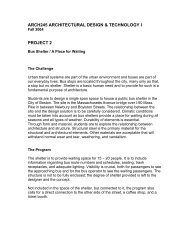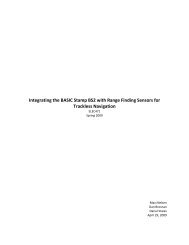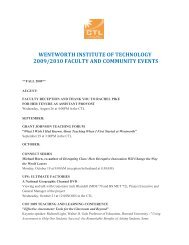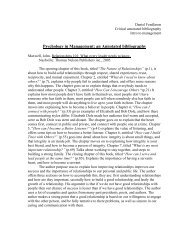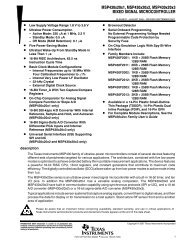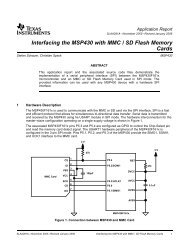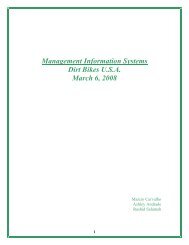Analog Circuit Design Laboratory Report - MyWeb at WIT ...
Analog Circuit Design Laboratory Report - MyWeb at WIT ...
Analog Circuit Design Laboratory Report - MyWeb at WIT ...
Create successful ePaper yourself
Turn your PDF publications into a flip-book with our unique Google optimized e-Paper software.
Through the use of neg<strong>at</strong>ive feedback, the op amp can be configured so th<strong>at</strong> VO is<br />
not always in a st<strong>at</strong>e of s<strong>at</strong>ur<strong>at</strong>ion, but r<strong>at</strong>her equal to the value in Equ<strong>at</strong>ion 5. In the<br />
inverting configur<strong>at</strong>ion the closed loop gain, given in Equ<strong>at</strong>ion 7 as the neg<strong>at</strong>ive r<strong>at</strong>io of<br />
the feedback and input resistances, was proven correct as the gain -2.97 was within 2% of<br />
the calcul<strong>at</strong>ed value. Also for the non-inverting and voltage follower configur<strong>at</strong>ions, the<br />
closed loop gains were within 1% of the calcul<strong>at</strong>ed values. Knowing th<strong>at</strong> the op amps so<br />
closely perform according to the theoretical rel<strong>at</strong>ionships allows for easy design of signal<br />
conditioning circuits. To design the proper circuit, given the desired voltage gain, one<br />
may simply choose the feedback resistor value and solve for the input resistance. For<br />
example, to achieve a gain of -5 the designer chooses an inverting configur<strong>at</strong>ion and<br />
feedback resistor of 100-kΩ. The necessary input resistance would be 20-kΩ.<br />
The ADIFF describes the amplific<strong>at</strong>ion amount of the detected voltage difference<br />
between input terminals. This gain results in an output voltage of the difference amplifier<br />
ready for applic<strong>at</strong>ion. This gain value can be controlled by the four resistors, m<strong>at</strong>ching<br />
resistor pair combin<strong>at</strong>ion <strong>at</strong> the differential amplifier inputs. For both the differential and<br />
instrument<strong>at</strong>ion amplifiers the calcul<strong>at</strong>ed and measured values for ADIFF were within<br />
3%.<br />
The ACM is ideally zero since any VCM should have no amplific<strong>at</strong>ion. This is a<br />
tool used to help portray a real difference amplifier’s accuracy. It is responsible in<br />
determining the CMRR, which for an ideal circumstance is infinite. Therefore, as ACM<br />
becomes finite, the CMRR will decrease from the ideal value. For the differential<br />
amplifier the ACM can be regul<strong>at</strong>ed better by using resistor values with much higher<br />
precision. If the CMRR is too low, the differential amplifier will be ineffective since the<br />
49



